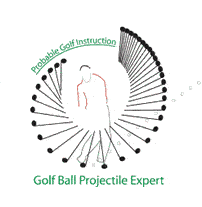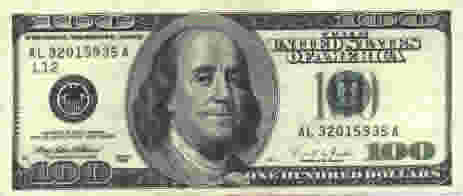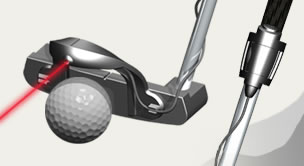
|
|
How to hit the Longest Golf Ball Using New Golf Club Technology
Probable Golf has done exhaustive research on new driver technology. I've summarized what you need to know about this new technology to maximize your distance off the tee. Learn the reasons why pga pros are hitting it so much farther off the tee today. Learn what you need to know to add distance to your tee shots.
In addition to this itemized checklist, this report will allow you to:
Many of the high tech changes such as shafts made of special composites and shafts with low or high kick points OR high or low torque, can cost a lot of extra money but actually only benefit a small percentage of golfers. Order your copy today. View a snipit of the report below.
Once processed by 2CheckOut, you will be prompted with a link to download. Since the time is very limited, you should download immediately. OR Pay using PayPal You will receive an email from PayPal within minutes with download instructions. This page provides information on what to look for with golf club and golf ball technology so that the golfer can hit the longest golf ball possible with his/her golf swing. It also provides an itemized checklist to use when buying a new driver. Proper Preparation Prevents Poor Performance
Take a look at the Laser Putting Device that I use and consider getting one for yourself. You can use it to improve your putting alignment. You can even attach it to the face of your iron when practicing your alignment process. Order yours TODAY! Only $49.95
Driver Head Weight
Club head weight (or more correctly, club head mass) is one of the key contributors to distance off the tee. The greater the mass of the club head and the great its speed, the farther the ball will go. Unfortunately, the greater the club head's mass, the slower will be its speed at impact. One can't swing a more massive (heavier) club head as fast. The physics of the interaction between club and ball is quite well understood. At play are the laws of momentum and energy. A given player (let's say you) is capable of swinging a club with a some maximum speed. The more massive the club, the slower will be this maximum speed. The speed of the ball is a result of the mass of the club head and its speed. So, as the mass increases, so will the resulting ball speed. But, since the club head is more massive, its maximum speed is less. There is actually an optimum mass for each golfer that produces the greatest ball speed. For most golfers, that mass is about 200 grams. A physics equation that determines the resulting ball speed is: V = U*(1+e)/(1+m/M) where U = club head speed, m = mass of ball, M = mass of club head e is called the coefficient of restitution which is a measure of the efficiency of the kinetic energy transfer between club and ball. e has a value between 0 and 1. A collision with e=0 would be like a club hitting a putty ball, with the ball sticking to the club (maximum loss in kinetic energy). A collision with e=1 is called a perfectly elastic collision (no loss in kinetic energy). There would be no heat or sound produced at all, so of course is completely hypothetical. In the past 10 to 15 years, club and ball manufacturers have made great leaps in increasing the e of the collision due mainly to the hollow, metal faced drivers whose faces can "spring back" upon collision. So much so that the USGA has put in place a legal maximum which is about 0.83. Club testers have found that e decreases with increased club head speed. Tiger Woods' drives, therefore, are not as efficient as yours or mine. He makes up for this by having significantly more club head speed. If you are interested in receiving a newsletter dedicated to the ideas of this site, use the form below to subscribe.
Once processed by 2CheckOut, you will be prompted with a link to download. Since the time is very limited, you should download immediately. OR Pay using PayPal You will receive an email from PayPal within minutes with download instructions.
Wooden Driver
Titanium Driver
Let's take the example that your club head speed is 110 mph (48.9 m/s), which means you are a relatively long hitter. A typical value of e (exact value depends on the club) would be about 0.83. According to the equation above, the resulting ball speed (assuming a solid hit) would be: V = 110*(1+0.83)/(1+46/200) = 110*1.49 = 164 mph assuming a 200 g club head hitting a 46 gram ball. The ball speed ends up being 1.49 times the original club head speed. Let's assume the amount of energy you can deliver to the club is the same no matter what the mass of the club. Light clubs would have high speed, heavy clubs would have low speed, but the kinetic energy of the club would be the same in each case. The equation for kinetic energy is: KE = 0.5*m*v*v = 0.5*0.19*48.9*48.9 = 227 Joules where mass must be in kg and speed in m/s. In the table below are the resulting values for club head speed, e, and ball speed using different mass clubs, assuming constant kinetic energy of 227 Joules . . . . . . . . . . . . . . . . . .Note that it appears that the less the mass of the club, the greater the ball speed. The assumption made, however, is that the kinetic energy of the club is the same in all cases. Realistically, a golfer cannot obtain such speeds with light clubs. As determined by tests published in "Search for the Perfect Swing," the speeds of the clubs and the resulting ball speeds would be:
Ball speed actually peaks when using a club head with mass 0.210 kg or 210 g. This result is for a kinetic energy of 227 Joules. Different players with different swings and strengths would all have a slightly different optimum club head mass. For most, it is around 200 g, thus most drivers have club head masses that correspond to this. For most, experimenting to find the optimum mass . . . . . . . . . . . . . . . . . . . . . . . . . . . .
Driver Loft Other than environmental conditions, the three major determinants of distance for a golf ball are: 1. initial backspin 2. club head speed 3. initial trajectory angle. graphic here
For the most part, the club can't do much for your club head speed (as long as it has optimum mass, see above), but it can play a major roll in trajectory angle and backspin. If there were no air, the ball's backspin would not have any effect and the optimum launch angle would be 45 degrees. The ball would not go anywhere near as far as it goes in air. Backspin creates a lot of lift for the ball which keeps it in the air longer, so it can fly farther. Check
out the graph below of a golf ball hit with a driver under
3 different conditions . . . . . . . . . . . . . . . . .
. . . . . . . . . . . . . . . . . The spin on the ball creates lift which increases the height reached and increases the time of flight so that the ball travels further. If there were no air, spin wouldn't matter at all. If the air is changed (pressure, temperature, density) the height and distance travelled will change. The initial trajectory angle and backspin are greatly affected by the loft of the club and its center of mass (the path of the club, ascending or descending, also plays a role). The loft which optimizes distance depends on club head speed. The greater the club head speed, the lower the desired loft angle. For a short hitter, the optimum loft might be 16 degrees (which means a 3 wood loft), while for a longer hitter, the optimum angle might be 10 degrees . . . . . . . . . . . . . . .
. . . . . . . . . . . . . . . Most golfers should play a driver which has a center of mass that is low and back from the face of the club. This will promote higher trajectory without having to have too much loft. The greater the loft of the club face, the smaller will be the ball speed. One wants optimum trajectory with maximum ball speed. Having the center of mass back from the face will also mean the club will twist less on off center hits (which occur more often than not).
Driver Shaft As presented earlier, to achieve maximum distance, the golfer must provide the club head with as much energy (and thus speed) as possible. Because of the very short duration of impact (about 0.0005 seconds), the golfer has no influence on the transfer of energy between the club and the ball. It's as if the club head were not attached to the shaft at that point. In fact, very little of the shaft's mass contributes to the transfer . . . . . . . . .
. . . . . . . . . . . . Many think that the kicking forwards of the club head increases club head speed, thus one wants a shaft that is stiff enough to reduce twist and but not too stiff to reduce club head speed. In actual fact, it has been found through high speed camera measurements that . . . . . . . .
. . . . . . . . . . . . . the position of the kick point of the shaft also influences how soft or stiff it feels, although it makes no significant difference to . . . . . . . . . . . . . . . . . . . . . . . . for a long hitter, a steel shaft driver would yield about . . . . . . . . . . . . yards less distance. A short hitter would find similar differences.
Driver Club Face Area How often do you hit the ball from the center of the club face of your driver? You know you've gotten all of the ball; you've smoked it. Next time you play, keep track. If you're a high handicapper, you probably don't make solid contact all that often. In fact, it has been well documented from tests that the higher the handicap of the golfer, the greater the percentage of mishits and the greater the degree of error of the mishits.
. . . . . . . . . . The actual center of the sweet spot is not geometry center of the club face. For most new drivers, the sweet spot is a little higher, and thus maxium distance results from balls striking high on the club face, not low. This is why most players use longer tees today when using the large face drivers. The ball needs to be teed a little higher. Examples shown above right are the Ping Tsi and Titleist 975D. See more examples here . . . . . . . . . . . . . It's much like to switch from small to large tennis rackets back in the 80s. The tennis ball is easier to hit with a larger racket. Likewise, the golf ball is easier to hit with a large face driver. One might think that the increased head size would increase air resistance and thus decrease club head speed significantly . . . . . . . . . . . . .
. . . . . . . . . . . . In summary, this section has introduced and discussed reasons why new driver technology has increased distance. The right club head weight, loft, center of gravity and shaft for the individual golfer can optimize distance . . . . . . . . . . . . Play with my Driver Distance Calculator. You can input such variables as loft and club head speed to determine the optimum loft.
Optimize in All Weather
Once you have a driver that optimizes distance for your swing, other than how you swing on a day, the next major factor that determines how far you drive the ball is the weather. Distance depends on air temperature, humidity and air pressure. A golfer can modify his/her game slightly in different weather conditions to optimize distance on any given day . . . . . . . . . . . . . . . . . .. . . . . . . . .Temperature affects distance in two ways. Firstly, . . . . . . . . . .
Have you ever had the experience of trying a new club, say a driver, hitting it really well, and then buying it? Then, after that, you never really hit it that well again? Your old driver was just as good. Many of my friends and playing companions have had this experience. You're not alone. Buying a new driver requires a lot of serious thought. You needs to try many before you decide. The new driver technology is very expensive. One hates to feel they've thrown their money away. One positive step you've made is purchasing this guide; a small investment to inform yourself before an expensive purchase. Here is an itemized checklist for buying a new driver . . . . . . . . . . . . . . . . . . . .
The Golf Ball Two things have led to PGA Tour players hitting the ball significantly farther in the last 15 years: new driver technology and new golf ball technology. Most of this article has focused on drivers. This section will focus on the new golf ball and its benefits to all golfers. In Hogan and Snead's era, the golf balls used were . . . . . . . . . . . .
PGA Tour players now hit it farther because of the much better driver technology (most significant reason) and because they can now play a high spin ball without the ball being a wound ball with a balata cover. Amateurs, on the other hand, have been playing with harder 2-piece balls for years, therefore their new found distance is mainly the result of club technology. Better amateurs that previously played with soft, wound balls have realized additional gains, like the pros, since they can now play a soft, high spin ball that is still durable and goes a long ways. What is the longest golf ball out there? That's a very popular search by surfers with the search engines. Pretty well every ball manufacturer claims to have the longest ball. They can't all be the longest. I'd like to suggest to you two avenues to pursue if this question is important to you. 1. Purchase my Longest Golf Ball Report in which I statistically analyze distances of over 70 different golf balls with differing constructions. The balls were hit using a mechanical hitting machine. 2. Take a look at the results of an independent golf testing company. They have tested many of the new golf balls using golfers and launch monitor equipment. Below is a sample of their results. The Pro V1 and the Nike One are both . . . . . . . . . . . . My Longest Golf Ball Report explains what this uncertainty does to concluding whether one golf ball is in fact longer than another for all golfers. Another characteristic of a golf ball that has a slight effect on distance is the size and depth of the dimple. Without any dimples at all, a drive would only carry about 100 yards. It has been determined that the deeper the dimple, the greater the distance, although it is only a few yards. On today's new balls, the size and number of dimples does not affect distance significantly. The different patterns are mainly for aesthetics. Play with my Driver Distance Calculator. You can input such variables as loft and club head speed to determine the optimum loft. I'll be adding to it soon so that you can input different golf ball parameters such as speed and spin.
Backspin and Distance If you've been a Probable Golfer long, you know that most of the analysis that I do is using a golf ball trajectory computer program that I have written to simulate golf ball flight. The most difficult things to factor in are the changing drag and lift forces that occur on the ball. Both are dependent on ball speed and backspin. They are ever changing. I have accomplished this task by using a spreadsheet. My model agrees very well with experimental results. To see more, go here . . . . . . . . . . . . . . |





